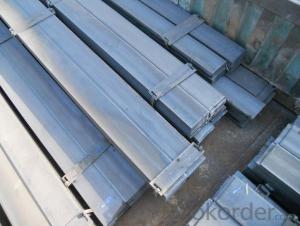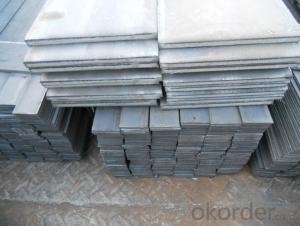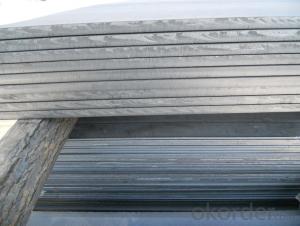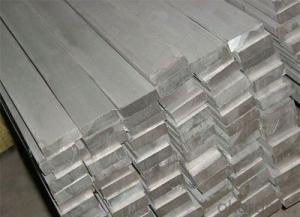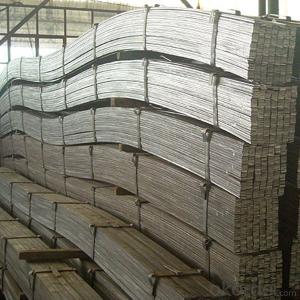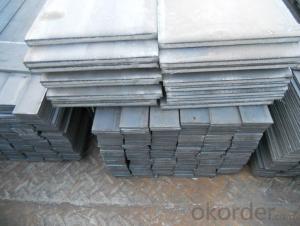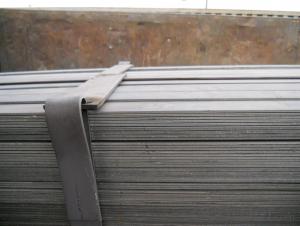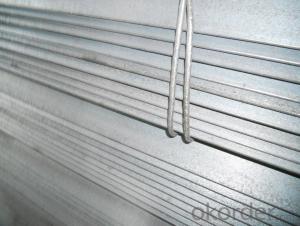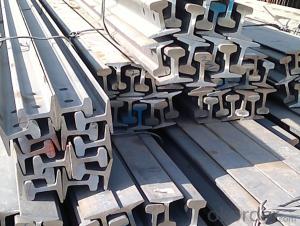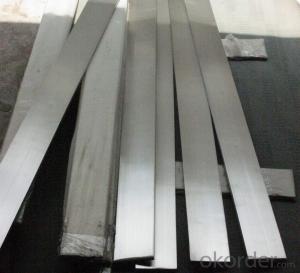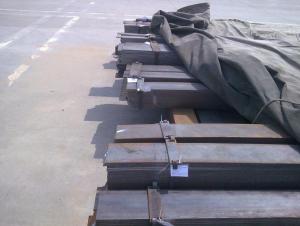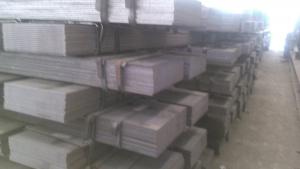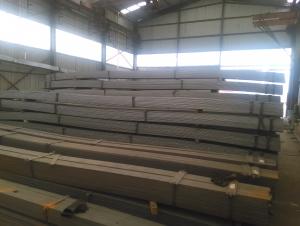Prime Mild Steel Hot Rolled Flat Steel Bar
- Loading Port:
- China main port
- Payment Terms:
- TT OR LC
- Min Order Qty:
- 100 m.t.
- Supply Capability:
- 10000 m.t./month
OKorder Service Pledge
OKorder Financial Service
You Might Also Like
Specification
Product Description:
OKorder is offering Prime Mild Steel Hot Rolled Flat Steel Bar at great prices with worldwide shipping. Our supplier is a world-class manufacturer of steel, with our products utilized the world over. OKorder annually supplies products to African, South American and Asian markets. We provide quotations within 24 hours of receiving an inquiry and guarantee competitive prices.
Product Applications:
Prime Mild Steel Hot Rolled Flat Steel Bar are ideal for structural applications and are widely used in the construction of buildings and bridges, and the manufacturing, petrochemical, and transportation industries.
Product Advantages:
OKorder's Prime Mild Steel Hot Rolled Flat Steel Bar are durable, strong, and wide variety of sizes.
Main Product Features:
· Premium quality
· Prompt delivery & seaworthy packing (30 days after receiving deposit)
· Can be recycled and reused
· Mill test certification
· Professional Service
· Competitive pricing
Product Specifications:
Manufacture: Hot rolled and Slited
Grade: Q195 – 235
Certificates: ISO, SGS, BV, CIQ
Length: 6m – 12m, as per customer request
Packaging: Export packing, nude packing, bundled
Processing: the thickness of 2.0-16 mm;
Shear length: 2000 mm above
Wide degree: 15-1250 - mm;
Leveling precision: 1-2 MM square
FAQ:
Q1: Why buy Materials & Equipment from OKorder.com?
A1: All products offered byOKorder.com are carefully selected from China's most reliable manufacturing enterprises. Through its ISO certifications, OKorder.com adheres to the highest standards and a commitment to supply chain safety and customer satisfaction.
Q2: How do we guarantee the quality of our products?
A2: We have established an advanced quality management system which conducts strict quality tests at every step, from raw materials to the final product. At the same time, we provide extensive follow-up service assurances as required.
Q3: How soon can we receive the product after purchase?
A3: Within three days of placing an order, we will arrange production. The normal sizes with the normal grade can be produced within one month. The specific shipping date is dependent upon international and government factors, the delivery to international main port about 45-60days.
Images:
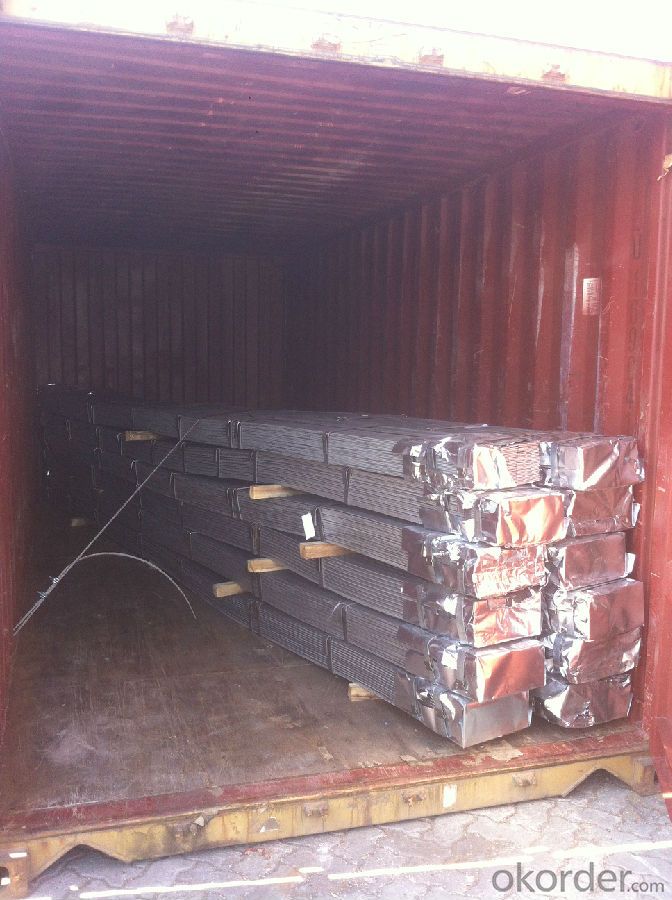
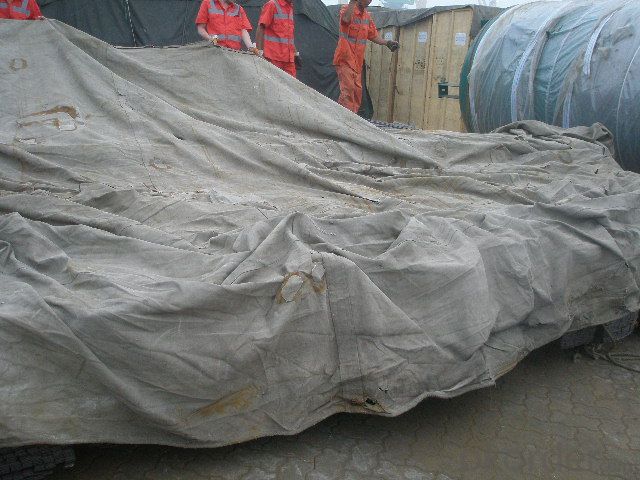
- Q: Are steel flat bars suitable for making gears or sprockets?
- When it comes to making gears or sprockets, steel flat bars are a truly suitable option, particularly if they are crafted from top-notch steel. Steel possesses exceptional strength, durability, and resistance to wear and tear, rendering it an outstanding material for gears and sprockets that must endure heavy loads and repetitive movements. Furthermore, steel can be easily manipulated and molded into the desired gear or sprocket shapes, making it a versatile choice for such applications. Nevertheless, it is crucial to bear in mind that the specific requirements of the gears or sprockets, including size, tooth profile, and surface finish, must be taken into account when choosing the appropriate steel flat bar for the task at hand.
- Q: Are steel flat bars commonly used in the energy sector?
- Steel flat bars are frequently utilized in the energy industry. Steel, being a versatile and durable material, provides exceptional strength and resistance, rendering it suitable for diverse applications within the energy sector. Specifically, flat bars are commonly employed in power plant and oil refinery construction, as well as other energy infrastructure projects. They serve multiple purposes, such as providing structural support, reinforcing elements, and creating frames and frameworks for equipment and machinery. Moreover, steel flat bars are extensively used in the production of renewable energy systems, such as solar panels and wind turbines. Their superior strength-to-weight ratio and ability to withstand extreme conditions make them a favored choice in the energy sector.
- Q: What is the typical weight of a steel flat bar?
- The typical weight of a steel flat bar can vary depending on its dimensions and the specific type of steel used. Generally, a steel flat bar can weigh anywhere between a few pounds to several hundred pounds. It is best to refer to the manufacturer's specifications or consult a metal weight calculator for a more precise estimation based on the specific dimensions and type of steel flat bar.
- Q: What are the different grades of steel used in flat bars?
- Flat bars commonly use several grades of steel, each with unique properties and applications. Some of the most frequently used grades are: 1. Mild Steel (or low carbon steel): This grade is widely utilized in flat bars due to its low carbon content, making it easy to work with and weldable. It finds applications in construction, automotive, and general fabrication. 2. Carbon Steel: With a higher carbon content (usually ranging from 0.30% to 2.0%), carbon steel offers increased strength and hardness compared to mild steel. It is suitable for applications requiring higher load-bearing capabilities, such as machinery parts and structural components. 3. Alloy Steel: This type of steel contains additional elements like manganese, silicon, nickel, chromium, or molybdenum, which enhance mechanical properties such as strength, hardness, and corrosion resistance. Alloy steel flat bars are commonly used in manufacturing tools, gears, and machine parts. 4. Stainless Steel: Stainless steel is corrosion-resistant and contains a minimum of 10.5% chromium. It excels in environments prone to rust, staining, and corrosion, making it ideal for applications in food processing, pharmaceuticals, and marine industries. Stainless steel flat bars come in various grades, with 304 and 316 being the most common. 5. Tool Steel: Designed to exhibit exceptional hardness, toughness, and wear resistance, tool steel is specialized for manufacturing cutting tools, molds, and dies. Tool steel flat bars are available in grades like A2, D2, and O1, each offering specific properties for different applications. These examples represent only a few of the many specialized grades available for flat bars, including heat-resistant steel, wear-resistant steel, and high-strength steel. The choice of grade depends on specific application requirements, such as strength, corrosion resistance, hardness, and other properties.
- Q: Can steel flat bars be used in the construction of storage racks or shelves?
- Yes, steel flat bars can be used in the construction of storage racks or shelves. Steel is a strong and durable material that is commonly used in the construction industry. Flat bars provide a sturdy and stable base for storage racks or shelves, ensuring they can support heavy loads and withstand the test of time. Additionally, steel flat bars can be easily welded or bolted together to create customized storage solutions that fit specific needs and space requirements. Overall, steel flat bars are a reliable choice for constructing storage racks or shelves due to their strength, durability, and versatility.
- Q: How to determine the application direction of steel grid plate
- This order must be strict and clear. The steel grid plate in the length direction (flat length direction) on at both ends of a supporting beam, i.e. use or the use of slot, and ends in the width direction can not need support. Because the bearing capacity of steel plate mainly from the flat direction. For example drain cover
- Q: How many steel tubes can be used instead of 60 * 10 flat steel?
- It can also be hardened by machine speed. Good weldability. The abrasion resistance and fatigue strength are better than 304 stainless steel.
- Q: Can steel flat bars be used in the construction of railways?
- Yes, steel flat bars can be used in the construction of railways. They are commonly used as structural components in rail tracks, providing durability and strength to support the weight of trains and ensure stable and safe railway operations.
- Q: Can steel flat bars be used for making agricultural equipment?
- Agricultural equipment can be made using steel flat bars. Steel, a durable and versatile material, is commonly used in constructing agricultural machinery. By shaping and welding steel flat bars, various components and structures required for agricultural equipment, such as plows, cultivators, and harrows, can be created. The robust and inflexible nature of steel flat bars makes them suitable for enduring the demanding conditions and pressures encountered in agricultural operations. Moreover, steel is resistant to corrosion and can withstand exposure to moisture and other elements commonly found in agricultural environments. In conclusion, steel flat bars are a popular choice for manufacturing agricultural equipment due to their strength, durability, and versatility.
- Q: Are steel flat bars suitable for making architectural screens or grilles?
- Certainly! Architectural screens or grilles can be made using steel flat bars. Steel flat bars are a popular choice for architectural applications due to their numerous advantages. Firstly, steel is a strong and durable material, making it perfect for creating robust screens and grilles that can withstand various weather conditions and provide long-lasting performance. Furthermore, steel flat bars can be easily fabricated and shaped into different designs, allowing for customization and creativity in architectural projects. The adaptability of steel also enables architects to create screens and grilles with diverse patterns, textures, and finishes, enhancing the aesthetic appeal of the structure. Moreover, steel flat bars are cost-effective in comparison to other materials, making them a practical option for architectural screens or grilles. In conclusion, steel flat bars possess the necessary strength, durability, versatility, and cost-effectiveness required for the production of architectural screens or grilles.
Send your message to us
Prime Mild Steel Hot Rolled Flat Steel Bar
- Loading Port:
- China main port
- Payment Terms:
- TT OR LC
- Min Order Qty:
- 100 m.t.
- Supply Capability:
- 10000 m.t./month
OKorder Service Pledge
OKorder Financial Service
Similar products
Hot products
Hot Searches
Related keywords
